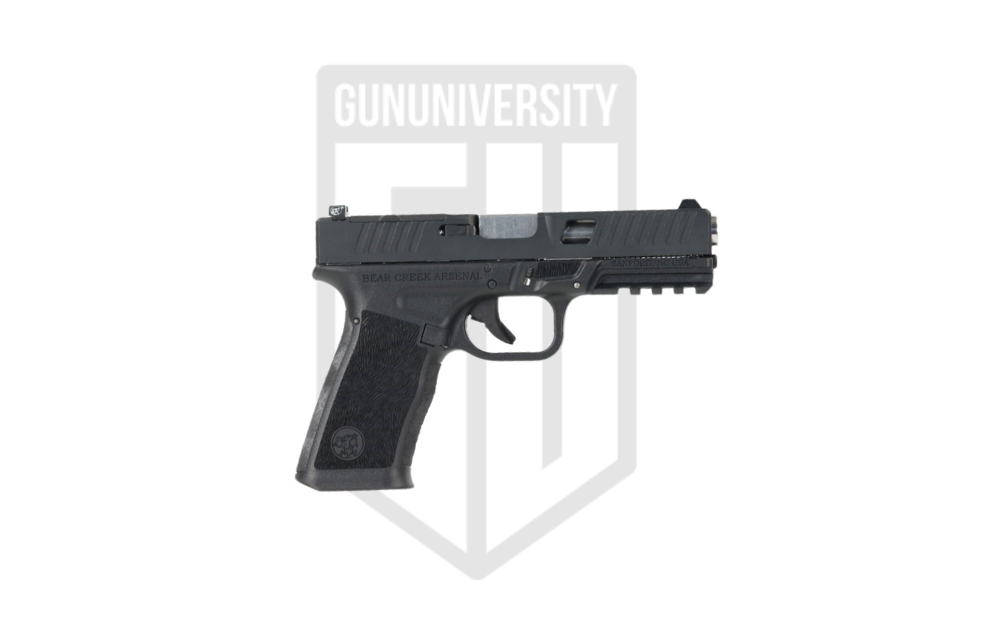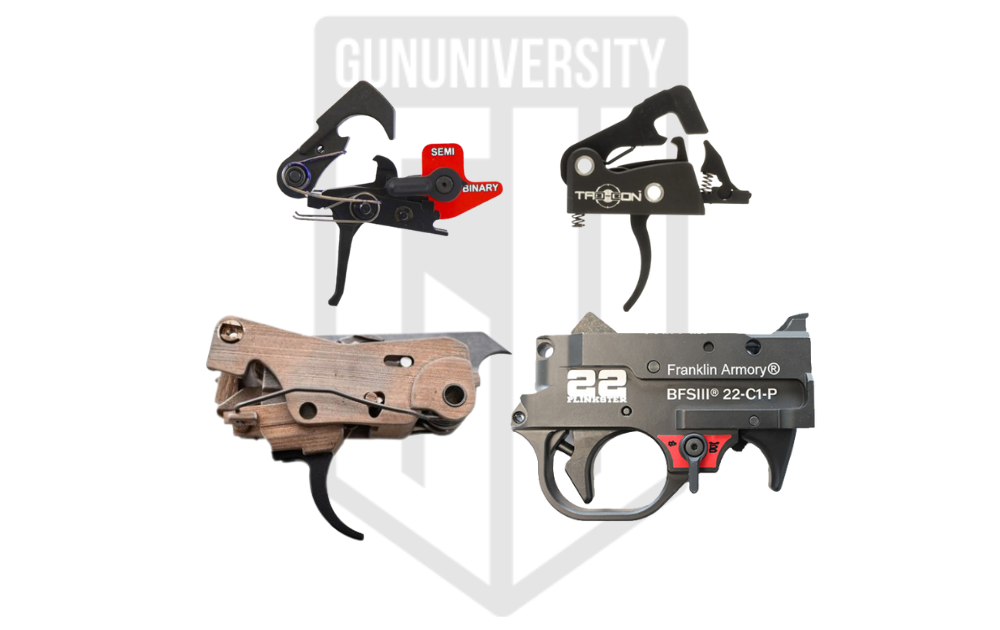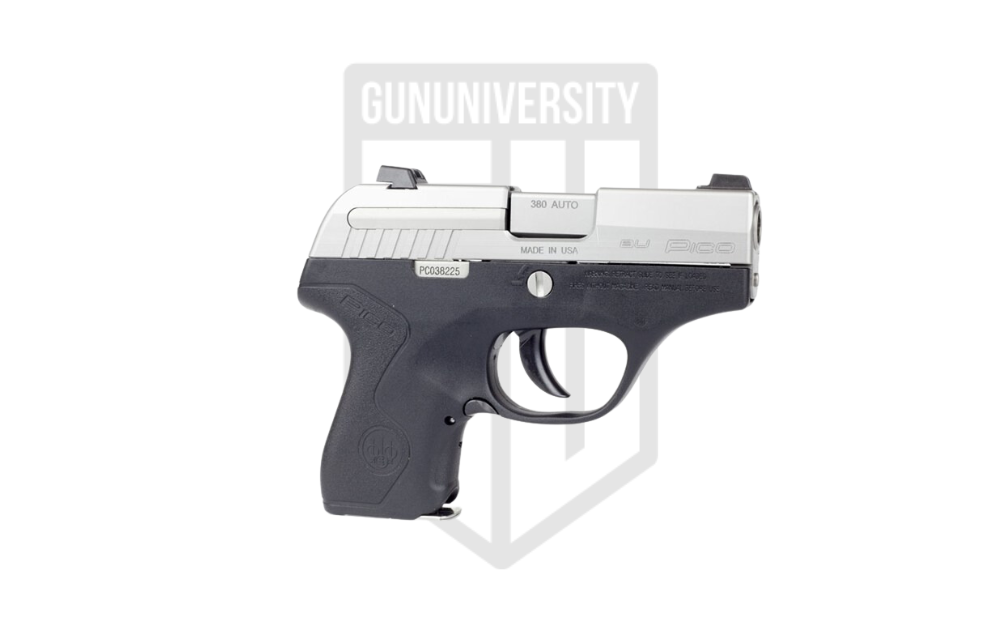Vortex Viper vs Venom Red Dot Comparison: Mini Red Dot Rumble
What’s the difference between the Vortex Viper and the Vortex Venom? That’s a worthwhile question, and as a former Marine Corps Infantryman, I finally have enough experience with both to fully answer that.
Now, to be clear, Vortex did send me a Venom red dot to test since I already had the viper, so thank you to those fine folks for making this article possible. However, as is the policy of Gun University, after the review, I sent it back so as to ensure the ‘giving’ of the red dot did not affect my review of it.
I got my hands on both a Viper and a Venom and have gone at it. I’ve pressed buttons, swapped batteries, swapped mounts, and put lead downrange to figure out not just the significant differences, but the small ones too.
Needless to say, there is a clear winner.
What is a Mini Red Dot Sight?
But before we get into the comparison, let’s establish what a mini red dot sight is, and what we shoudl expect from them.
Mini red dot sights are the compact versions of standard red dot sights. Designed for smaller firearms, they are lightweight and versatile, which makes them suitable for a variety of applications. While they can serve as primary sights on larger guns, their primary use is for compact applications.
Know how they work? They shine a neat little red dot onto a lens, making it super easy to aim quickly and accurately. People often pair them up with iron sights or scopes to get those accurate shots, whether they’re plinking targets, out hunting, or on some tactical mission. Their ease of use and fast target acquisition capabilities are what makes them a popular choice among shooters.
Vortex Viper vs Venom Comparison
To best understand the two, let’s start with a side-by-side comparison:
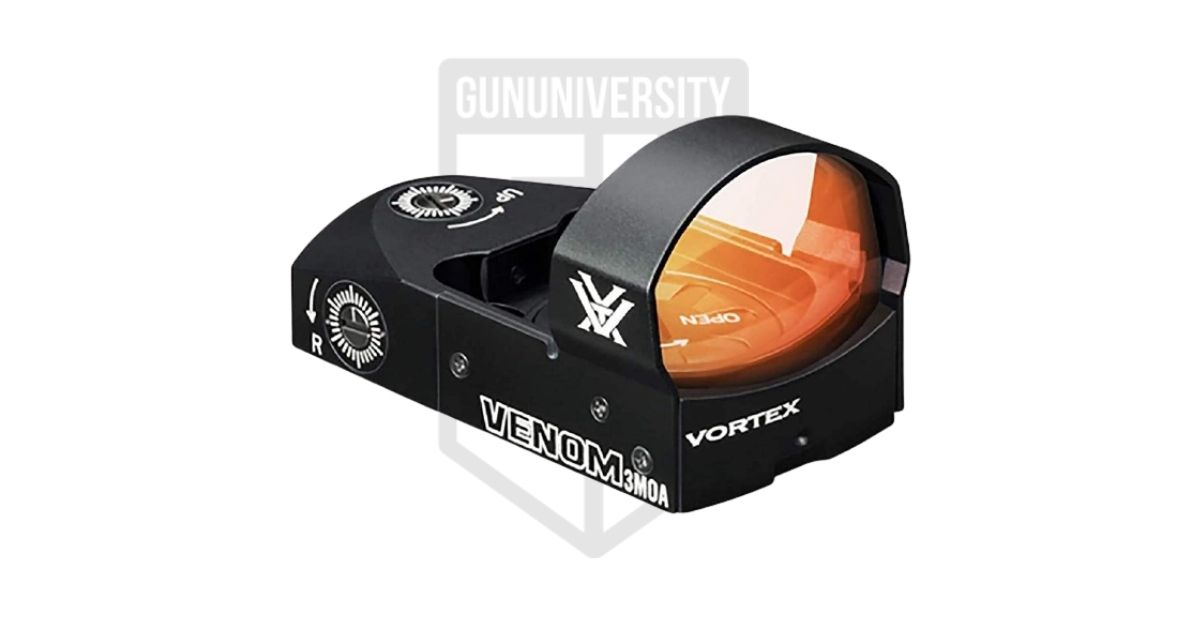
Vortex Venom
- Final Grade : A+
- MSRP : $349.99
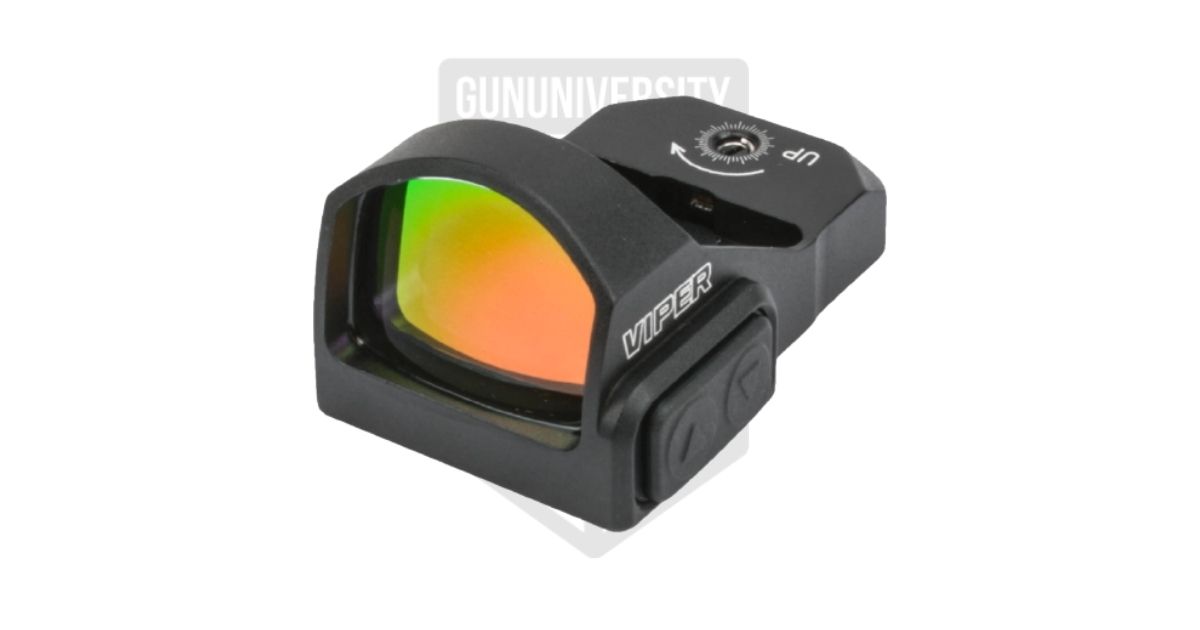
Vortex Viper
- Final Grade : A
- MSRP : $349.99
What They Have in Common
Before I dig into what makes these optics different, we have to dig into what makes them similar. The traits they share are what makes them so hard to tell apart. Both even start with a V in their name. Heck, as I write this, I keep looking over at both of them to make sure I’m identifying the right model.
Both the Viper and the Venom are mini red dot sights. Both feature a red reticle with ten different brightness levels. They feature a battery life measured out at up to 30,000 hours, depending on the setting. At the highest brightness setting, each optic will last 150 hours.
The Viper and Venom both use the Docter/Noblex footprint for mounts and cut pistol slides. This is the most popular mounting system out there, so it’s almost universal, and it’s easy to find mounts for.
Both of them come with near-identical accessories. You get a Picatinny mount, a Torx wrench, a protective rubber cover, lens cloth, and a flathead screwdriver for adjustments.
Both sights have fully multi-coated lenses which increase light transmission with several layers of an anti-reflective coating
Lastly, both optics come with the same durability ratings that include an Armortek lens coating, O ring seals for waterproof performance, and shockproof construction. Both are also backed by the Vortex VIP warranty.
The Most Notable Difference
Right off the bat, I’ll try and save you some time and get to the meat and potatoes of the differences. The Viper is built from the ground up to be a handgun mini red dot sight. It’s intended for easy use on all handguns but is smaller and excels on subcompact weapons.
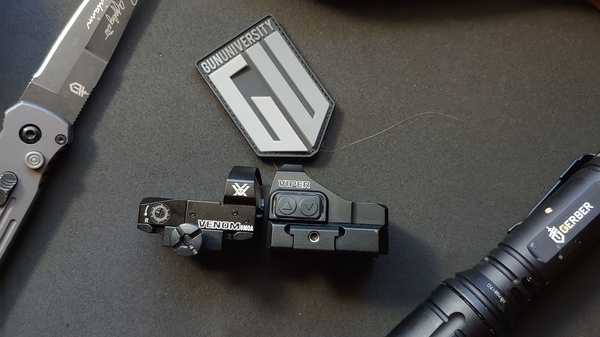
The dimensional differences include a .07 of an ounce difference in weight. Viper is shorter height and lengthwise as well are narrower all the way around. The Viper and Venom only share one size component, and that’s the height of the window at its peak. This is somewhat necessary to ensure proper co-witnessing with iron sights.
The Venom is larger but will still fit fine on a handgun. The Viper offers a beefier construction leading up to the window, which gives the optic a bit tougher design and eliminates weak points around the window. This makes the optic better suited for engagement ranges where hand to hand fighting is a reality.
The Vortex Viper and Vortex Venom also have different elevation and windage settings. This means you can adjust where your shots land when aiming. The Vortex Viper lets you adjust more, up to 120 MOA for both windage and elevation. The Vortex Venom has a smaller range of 100 MOA for these adjustments.
With a larger MOA range like the Vortex Viper’s 120 MOA, you can make finer adjustments, crucial for longer-distance shooting. For instance, each click on the Vortex Viper adjusts aim by about 120 inches at 100 yards, while on the Vortex Venom, it’s about 100 inches.
The thinner metal around the window of the Venom delivers you less obstructed peripheral vision. When mounted to a long gun, the thicker material of the Viper may block a little bit of your vision and, at moderate ranges, obscure a target. Is this a significant concern? No, but it’s worth mentioning.
I can tell you it’s smaller, but it’s easier to just show you via the specs of both optics.
Reticles and Brightness
Both the Venom and the Viper have ten brightness settings, and while the number is in common, the practical effect is different. The Venom offers a much brighter dot than the Viper. Both are practical in bright light situations, but the Venom can ratchet the brightness up.
The Venom has an auto mode as well. That sounds nice, and maybe for daylight competitive shooting, it is. For tactical use, I’d advise sticking to manual mode. The reticle adjusts to the light around you, not the light your target is in. A WML at night can wash out a reticle, and since the light is forward of the optic, the auto mode won’t adjust appropriately.
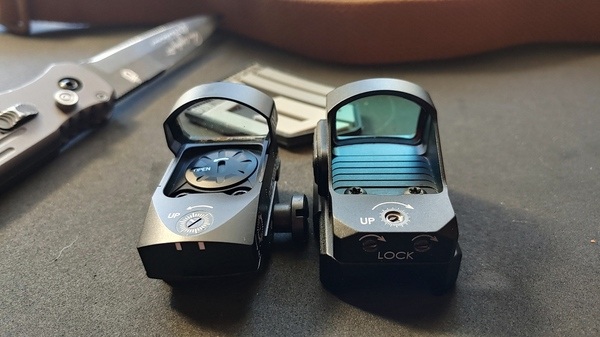
If you are in a bright environment aiming into a dark background, or vice versa, the dot could be hard to see, and manual adjustments will be necessary.
The Venom has two models, one offers a 3 MOA reticle, and one offers a 6 MOA reticle. The 3 MOA is better suited to long guns and the 6 MOA to handguns. The Viper only comes with a 6 MOA dot, which makes a ton of sense for an optic explicitly designed for pistols.
If you need some help deciding which is best for you, please check out 3 MOA vs 6 MOA Red Dots.
Adjustments and Turrets
Both optics have 1 MOA adjustment per click, and that’s plenty fine for a mini red dot. The only significant difference is that the Viper has locking turrets. To make adjustments, you unlock the turrets, adjust, and re-lock. This little feature is handy and is insurance against accidental adjustments. The Venom lacks that lockout feature.
Power Source
The Venom uses a 1632 battery, and the Viper uses a 2032 battery. Power-wise they are identical, but the 1632 is a little smaller than the 2032. The only practical difference that concerns you is that 1632 batteries are a few cents cheaper.
One major difference between the Viper and the Venom is battery placement. The Venom has a removable top cover. This facilitates quick and easy battery changes without the need to dismount the optic. The Viper has a battery compartment built into the bottom of the optic. To swap the battery, you have to remove the optic from its mount, insert the battery, and remount and zero.
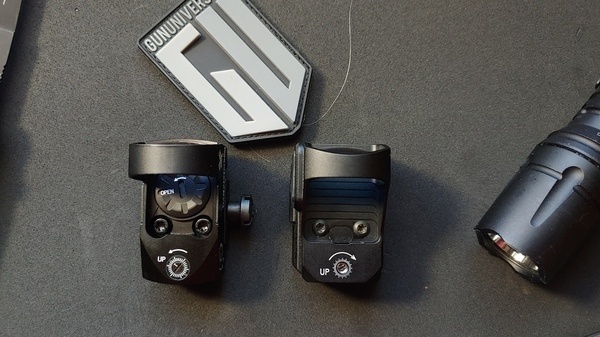
The Venom is much more convenient, but this design adds a little size to the optic. The Viper sacrificed convenience for size.
Controls
The Vortex Viper and Vortex Venom both offer dot intensity controls, allowing you to adjust the brightness of the red dot according to your environment and shooting conditions. These sights use a two-button control scheme to turn the optic on and off and to adjust brightness levels. I much rather have this system than a single button control like the Fastfire 3. The buttons slightly differ between each model.
However, there are differences in how these controls operate. On the Viper, the first intensity levels are intentionally low to avoid being too bright for use with night vision. In contrast, the Venom tends to be consistently brighter.
Both sights feature 10 manual intensity levels, which can be adjusted using buttons located on the side. This allows you to precisely adjust the brightness of the dot for optimal visibility in different lighting conditions.
The Viper has larger, rubberized buttons. They are placed a little bit more forward on the optic. This control scheme allows your support thumb to activate the buttons when the optic is mounted to a modern pistol slide. It’s a smart move that allows adjustments without breaking the sight picture.
The Viper’s buttons take a deep, deliberate click to activate. Ergonomically it feels clumsy but serves a point. If the buttons were too easy to press, they could be accidentally engaged when carrying the gun in a holster.
The Venom’s buttons are considerably smaller and positioned almost halfway down the optic. These smaller, more rearward buttons would be less ergonomic on a handgun. However, they are more reactive, take less pressure to activate, and much more responsive. When a button is pressed, the user experiences tactile feedback that forces the Venom to respond instantly.
When turning the optic on, the Venom responded quickly, while the Viper took a half-second of a button press to turn on. The Viper requires a firm touch to utilize, and the Venom does not.
Which One is Best?
Both the Vortex Viper and Venom are well made, affordable, and featured filled mini red dot sights. Either could serve on a rifle, handgun, or shotgun, but that’s not to say they’d serve equally as well on every platform.
The smaller Viper is better suited for compact handguns. If you want to toss a reliable red dot on a Glock MOS model or a cut slide of any kind, the smaller and lighter Viper would be a great option. The Viper would be the best option for a subcompact handgun in the Glock 26 sized frame.
Here the smaller size will make a bigger difference. When you scale up to full-sized handguns, the extra size the Venom offers it’s a big deal. The Viper is specifically a handgun optic, and outside of that realm, it doesn’t offer the same versatility as the Venom.
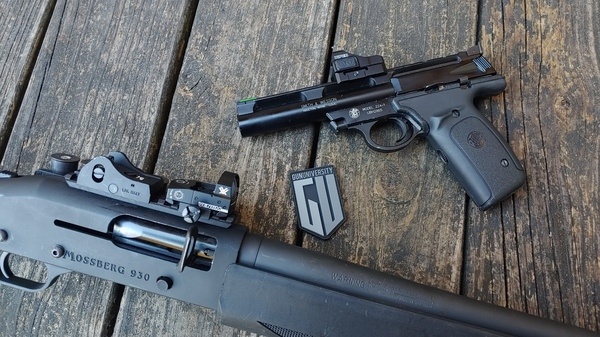
On rifles and shotguns, the Venom is a better choice. For rifles and even PCCs, the smaller 3 MOA reticle Venom allows for a less obstructed aiming point for the extra range rifles offer. With shotguns, the 3 MOA allows for longer slug throwing range, but the 6 MOA is a little faster for nothing but buckshot. The wider window size and thinner setup on the Venom allow for less peripheral vision obstruction and is better suited for rifles and long guns in general.
With a handgun, the threat is likely going to be so close that a little peripheral vision obstruction means practically nothing. The likelihood of the fight being close enough to involve wrestling and struggling makes the Viper’s beefed-up design more appropriate.
If you want a mini red dot for a long gun, go with the Venom. However, If you want a handgun optic, go with the Viper.
If I could choose only one of the two, then the Venom gets my money. I prefer the reactive controls, the ultra-bright dot, and the top opening battery compartment.
Vortex Venom and Viper: Report Cards Compared
Vortex Venom

Reticles/Brightness
10 different brightness settings w/ an auto mode. Super bright with a 3 or 6 MOA dot.
A+Adjustments and Turrets
1 MOA adjustments without locking turret feature.
APower Source
Batteries accessed and changed through convenient top loading port. Increases overall size.
AControls
Small, reactive tactile buttons
A+Value
Perfect for the money.
A+Final Grade: A+
Vortex Viper

Reticles/Brightness
10 different brightness settings. Only 6 MOA red dot size available. Explicitly designed for pistols.
AAdjustments and Turrets
1 MOA adjustments with a locking turret feature.
A+Power Source
Battery compartment located on bottom of optic. Less convenient, but reduces overall size.
AControls
Less clicky, more deliberate buttons
AValue
Great value with great warranty
A+Final Grade: A
Out of the Park
The Vortex Viper and Venom are both well-made optics that come in at a sweet price point. The Vortex VIP warranty is the best you can get, especially for optics that cost as little as the Venom and Viper.
Vortex continues to do excellent work, and here’s to hoping they get into the realm of ultra-small optics like the Shield RMSc because we could certainly use more P365 sized red dots. Until then, the Viper and Venom are worthy options.
Vortex Venom Red Dot Review – FAQS
What is the benefit of the top load system on the Vortex Venom?
The top load system on the Vortex Venom makes changing batteries super easy. You can access the battery from the top without taking off the optic. It’s quick and saves time, especially when you need to change batteries in a hurry.
How does the battery cap on the Vortex Viper operate?
To change the battery on the Vortex Viper, you unscrew the battery cap located at the bottom of the optic. Then, you replace the old battery with a new one and screw the cap back on tightly to secure it in place.
Does the Vortex Venom have an up arrow for elevation adjustments?
Yes, the Vortex Venom has a feature for adjusting elevation, which is indicated by an up arrow symbol. This feature lets you change where your shots hit to make sure you’re accurate, especially at different distances.
Does the Vortex Viper feature an ambient light sensor?
No, the Vortex Viper doesn’t have a sensor to detect ambient light. Instead, you can manually adjust the brightness of the red dot depending on how bright or dim your surroundings are.
Can you adjust the brightness level of the reticle on the Vortex Venom red dot sight?
Yes, the Vortex Viper red dot sight offers 10 different brightness settings, allowing you to adjust the brightness of the reticle according to your preferences and shooting conditions.
Recent Posts
July 27, 2024
July 26, 2024
July 25, 2024

![The Best Shooting Ear Protection in 2024 [Tested]](https://gununiversity.com/wp-content/uploads/2021/09/best-shooting-hearing-protection.jpg)
